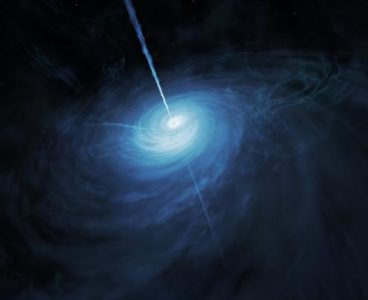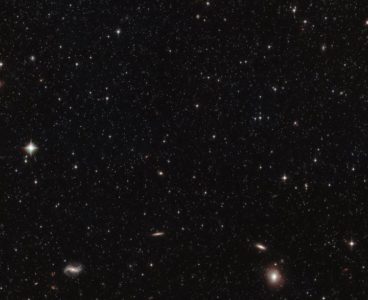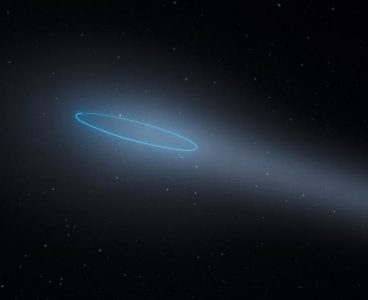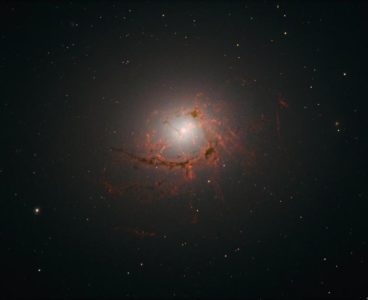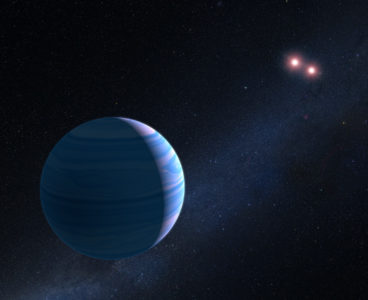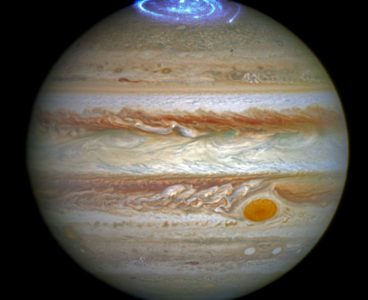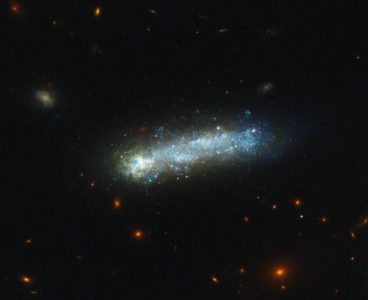The NASA/ESA Hubble Space Telescope has discovered the brightest quasar ever seen in the early Universe. After 20 years of searching, astronomers have identified the ancient quasar with the help of strong gravitational lensing. This unique object provides an insight into the birth of galaxies when the Universe was less than a billion years old.…
Hubble and Gaia Team up to Measure 3D Stellar Motion With Record-Breaking Precision
A team of astronomers used data from both the NASA/ESA Hubble Space Telescope and ESA’s Gaia satellite to directly measure the 3D motions of individual stars in a nearby galaxy. The achieved accuracy is better than anything previously measured for a galaxy beyond the Milky Way. The motions provide a field test of the currently-accepted…
Hubble Discovers a Unique Type of Object in the Solar System
With the help of the NASA/ESA Hubble Space Telescope, a German-led group of astronomers have observed the intriguing characteristics of an unusual type of object in the asteroid belt between Mars and Jupiter: two asteroids orbiting each other and exhibiting comet-like features, including a bright coma and a long tail. This is the first known…
Hubble Delivers First Hints of Possible Water Content of TRAPPIST-1 Planets
An international team of astronomers used the NASA/ESA Hubble Space Telescope to estimate whether there might be water on the seven earth-sized planets orbiting the nearby dwarf star TRAPPIST-1. The results suggest that the outer planets of the system might still harbour substantial amounts of water. This includes the three planets within the habitable zone…
Tangled Threads Weave Through Cosmic Oddity
New observations from the NASA/ESA Hubble Space Telescope have revealed the intricate structure of the galaxy NGC 4696 in greater detail than ever before. The elliptical galaxy is a beautiful cosmic oddity with a bright core wrapped in system of dark, swirling, thread-like filaments. NGC 4696 is a member of the Centaurus galaxy cluster, a…
Hubble Finds Planet Orbiting Pair of Stars
Two’s company, but three might not always be a crowd — at least in space. Astronomers using NASA’s Hubble Space Telescope, and a trick of nature, have confirmed the existence of a planet orbiting two stars in the system OGLE-2007-BLG-349, located 8,000 light-years away towards the center of our galaxy. The planet orbits roughly 300 million miles…
Hubble Captures Vivid Auroras in Jupiter’s Atmosphere
Astronomers are using the NASA/ESA Hubble Space Telescope to study auroras — stunning light shows in a planet’s atmosphere — on the poles of the largest planet in the Solar System, Jupiter. This observation programme is supported by measurements made by NASA’s Juno spacecraft, currently on its way to Jupiter. Jupiter, the largest planet in…
Hubble Nets a Cosmic Tadpole
This new image from the NASA/ESA Hubble Space Telescope shows a cosmic tadpole, with its bright head and elongated tail, wriggling through the inky black pool of space. Tadpole galaxies are rare and difficult to find in the local Universe. This striking example, named LEDA 36252, was explored as part of a Hubble study into…

